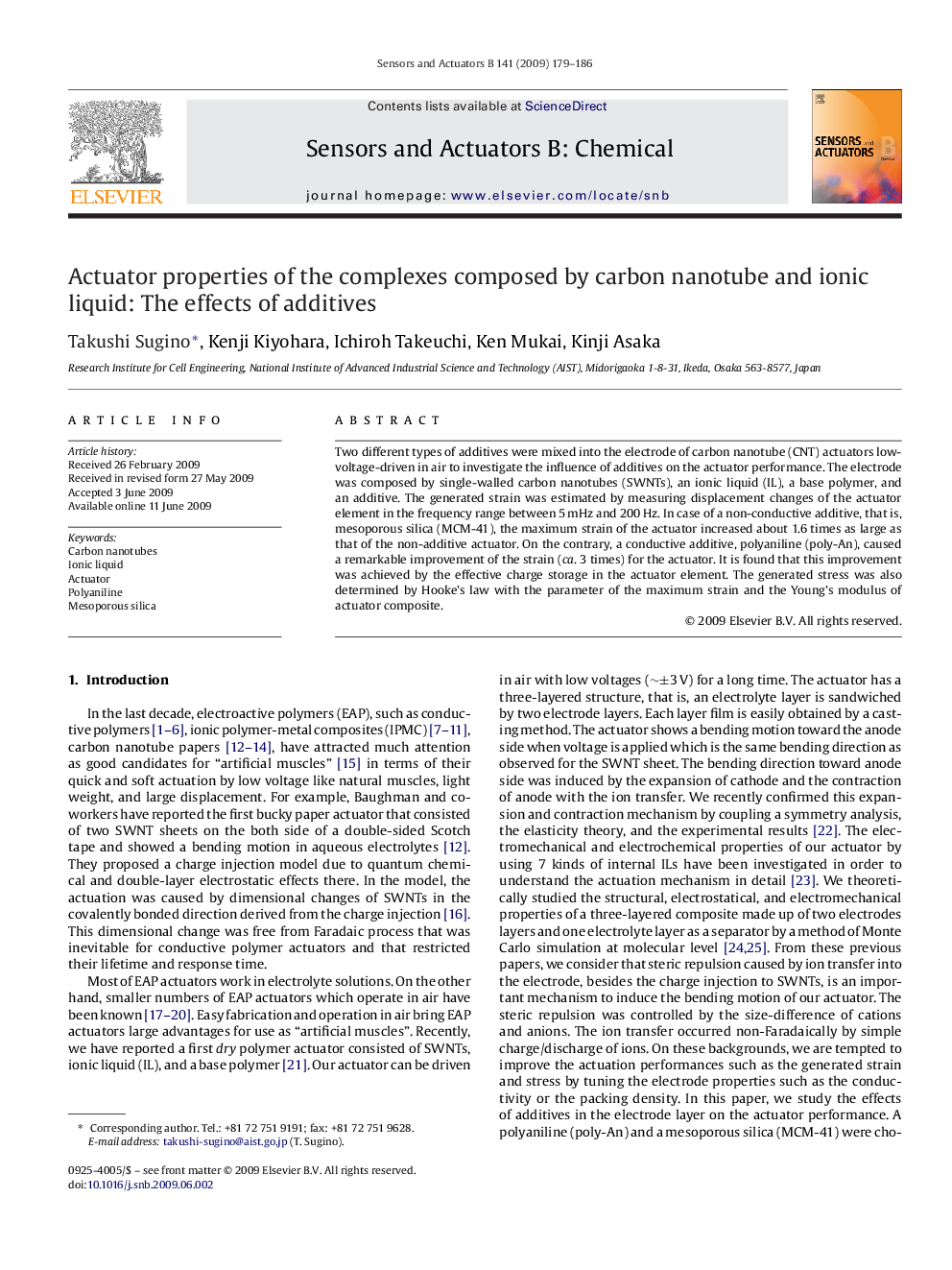| Article ID | Journal | Published Year | Pages | File Type |
|---|---|---|---|---|
| 745074 | Sensors and Actuators B: Chemical | 2009 | 8 Pages |
Two different types of additives were mixed into the electrode of carbon nanotube (CNT) actuators low-voltage-driven in air to investigate the influence of additives on the actuator performance. The electrode was composed by single-walled carbon nanotubes (SWNTs), an ionic liquid (IL), a base polymer, and an additive. The generated strain was estimated by measuring displacement changes of the actuator element in the frequency range between 5 mHz and 200 Hz. In case of a non-conductive additive, that is, mesoporous silica (MCM-41), the maximum strain of the actuator increased about 1.6 times as large as that of the non-additive actuator. On the contrary, a conductive additive, polyaniline (poly-An), caused a remarkable improvement of the strain (ca. 3 times) for the actuator. It is found that this improvement was achieved by the effective charge storage in the actuator element. The generated stress was also determined by Hooke's law with the parameter of the maximum strain and the Young's modulus of actuator composite.
